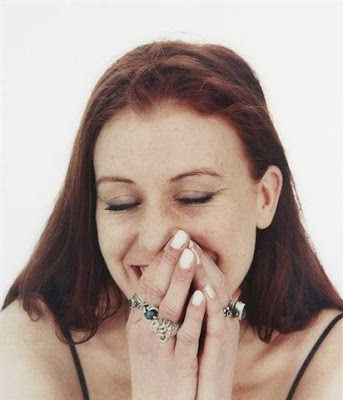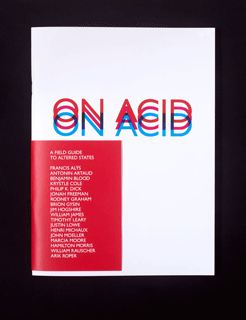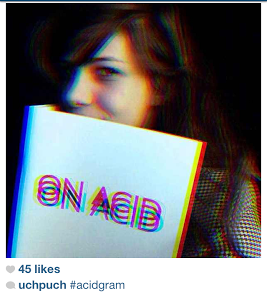
9/29/10
9/21/10
an accidental prophecy
VERTEX: You are known as one of the first authors to experiment with LSD. What effect has it had on your writing?
DICK: I don't know of any. It's always possible that it's had an effect I don't know about. Take my novel The Three Stigmata of Palmer Eldritch, which deals with a tremendous bad acid trip, so to speak. I wrote that before I had ever seen LSD. I wrote that from just reading a description of the discovery of it and the kind of effect it had. So if that, which is my major novel of a hallucinogenic kind, came without my ever having taken LSD, then I would say even my work following LSD which had hallucinations in it could easily have been written without taking acid.
VERTEX: Isn't "Faith of Our Father's," from Harlan Ellison's Dangerous Visions, supposed to have been inspired by or written under the influence of acid?
DICK: That really is not true. First of all, you can't write anything when you're on acid. I did one page once while on an acid trip, but it was in Latin. Whole damn thing was in Latin and a little tiny bit in Sanskrit, and there's not much market for that. The page does not fall in with my published work. The other book which suggests it might have been written with acid is Martian Time-slip. That too was written before I had taken any acid.
VERTEX: How much acid did you take anyway?
DICK: Not that much. I wan't getting up in the morning and dropping acid. I'm amazed when I read the things I used to say about it on the blurbs of my books. I wrote this myself: "He has been experimenting with hallucinogenic drugs to find the unchanging reality beneath our delusions." And now I say, "Good Christ!" All I ever found out about acid was that I was where I wanted to get out of fast. It didn't seem more real than anything else; it just seemed more awful.
VERTEX: In the light of your own experiences with acid, how accurate do you think The Three Stigmata of Palmer Eldritch is as far as drugs are concerned?
DICK: You remember what happened when they got on that drug? It was bad, wasn't it? It was so bad it taxed my ability to imagine bad. And it didn't do them any good to stop taking the drug because they had flashbacks. And nobody at the time knew LSD was going to produce flashbacks. I had it in mind that the ultimate horror would be to get an addictive, hallucinogenic drug out of your system and you would say, "Well, I'm back in the real world now." And suddenly a monstrous object from the hallucinogenic world would cross the floor and you would realize that you were not back. And this is what has happened to many people who have dropped acid. It was just an accidental prophecy on my part.
VERTEX: Doesn't your latest novel, A Scanner Darkly, also deal with drugs?
DICK: It's about an undercover agent who must take dope to conceal his cover and the dope damages his brain progressively, as well as making him an addict. The book follows him along to the end until his brain is damaged to such an extent that he can no longer wash pots and pans in the kitchen of a rehabilitation center. I hope the reader won't say, "Boy! I bet he did that!" This is the verisimilitude the author is trying to create, the sense that the novel actually is real. Now I was at a heroin rehab center in Canada, and I did draw from it, and I've had friends who dropped acid and became permanently psychotic. And a number who killed themselves too. But I wouldn't say that if affected my writing directly, that the acid wrote the book.
9/20/10
the eyes of a pig
9/14/10
9/11/10
9/10/10
9/9/10
A Partial Timeline of Significant Events Involving Dr. Arthur Cook

1932: Pacific Psychiatric Institute (PPI) is formed in San Diego to investigate the potential for social control through image-desire mechanisms, psychotropic compounds and orgone therapy. Their clients include Madison Avenue advertising firms, Warner Brothers and the United States Government.
1945: Octagon Ethnobotanical Laboratory (OEL) is formed as a subsidiary of PPI for the purpose of developing new and more powerful drugs from exotic and crossbred plants.
1948: OEL begins receiving secret funding from the CIA through the Joseph Bay Foundation.
1951: Prominent psychiatrist Arthur Cook is named the executive director of PPI and OEL. He is best known for his Hollywood-based psychotherapy practice with patients including Cary Grant, Ginger Rodgers and Alfred Hitchcock.
1954: OEL introduces Marasa, a drug developed from the [TK PLANT], with effects including hallucinations, perceived past life regression, outer body sensations and the disintegration of self.
1957: Amidst rumors of widespread drug use among PPI researchers and administrators, congress initiates official hearings into the ethical nature of the institute’s policy and procedures.
1958: PPI/OEL is stripped of government funding but is able to survive with private investors, mostly from Hollywood. The institute’s practices expand to include research into telepathy, ESP, vortices and time travel.
1961: Cook is forced out over alleged experiments involving minors. He quickly establishes his own organization, the Vortice Institute, headquartered on the top two floors of The Winston Hotel in Santa Monica. It is funded entirely by Norma Friedrich, heir to the Friedrich Rifle Manufacturing fortune.
1962: The Vortice Institute offers a range of Marasa-based therapies, claiming to treat conditions from alcoholism to cancer. Waiting lists are six months long.
1965: Cook and Friedrich start a publishing company, Vortice Books.
1966: The federal government classifies Marasa as a Schedule One narcotic. The Vortice Institute is raided the next day and four liters of Marasa are confiscated. Arthur Cook is arrested.
1967: Cook is acquitted of all charges, but the Vortice Institute is disbanded by court order. Vortice Books remains.
1967: Cook relocates to Monterey, California and where he founds the Artichoke Underground. What appears to be an independent countercultural research group is secretly being funded by the C.I.A’s Office of Scientific Intelligence.
1968: The Artichoke Underground opens “safe houses” around the world, where unsuspecting guests are dosed with various psychotropic substances and observed from hidden rooms behind two-way mirrors.
1970: Arthur Cook publishes Blue Star with Vortice Books, an account of his time travel research involving the rituals of the Hopi Indians.
1973: Arthur Cook is discovered unconscious in a London safe house having overdosed on the drug Batu. He had been in the UK for several months transmitting from a pirate radio station on an abandoned World War II Naval base five miles off the coast of Scotland. After being discharged from the hospital he is not heard from again for seventeen years.
1973-1979: It is later learned that Dr. Cook goes under ground in Jamaica and is a frequent guest at The Black Arc, where he becomes fascinated with the recording studio as an alchemical agent to alter human consciousness. It in this period that erects a sonic laboratory called Black Acid Studios that was designed to investigate the capacities of sound both as a healing agent and a non-lethal weapon. It is believed that many of his discoveries were later utilized by United States Army division psyops for mind culture, interrogation and torture.
1975: The Vortice Institute reopens in upstate New York on the estate of the Friedrich family with an emphasis on New Age healing practices. There is continued research with drugs supplied by OEL but that is kept secret until decades later.
1979: A major Indian pharmaceutical consortium buys OEL. The focus on psychedelic plants is shifted toward amphetamine research and development. PPI is closed.
1985: Vortice Institute closes due to a dwindling clientele. The Institute’s therapeutic practices had increasingly centered on communication with long-deceased Hopi spiritual leaders.
1987: Vortice Books publishes Black Acid Co-op an oral history of the movement starting with the founding of PPI through to the closing of the Vortice Institute. 1988: Norma Friedrich dies on the slopes of Aspen.
1990: After the fall of the Berlin Wall, Arthur Cook is discovered living on a houseboat in Sausalito where he had begun work as a consultant for technology firms. He denies speculation that he had spent the previous seventeen years in Soviet Russia continuing his psychedelic research.
2000: Arthur Cook, having made a fortune during the 90s tech boom, retires and begins a book about the future of computers as tools for new psychedelic research. He dies part way through the second chapter.
2006: Black Acid Co-op is republished with additional chapters exploring OEL involvement in amphetamine production, the explosion of Marasa use in Asia, and Arthur Cook’s alleged research from his seventeen years behind the Iron Curtain.
9/8/10
9/7/10
like the waves are makeing the face
bizarre oddities which consume your attention
"you can hear with your teeth, or perceive the colours by your stomach."

























